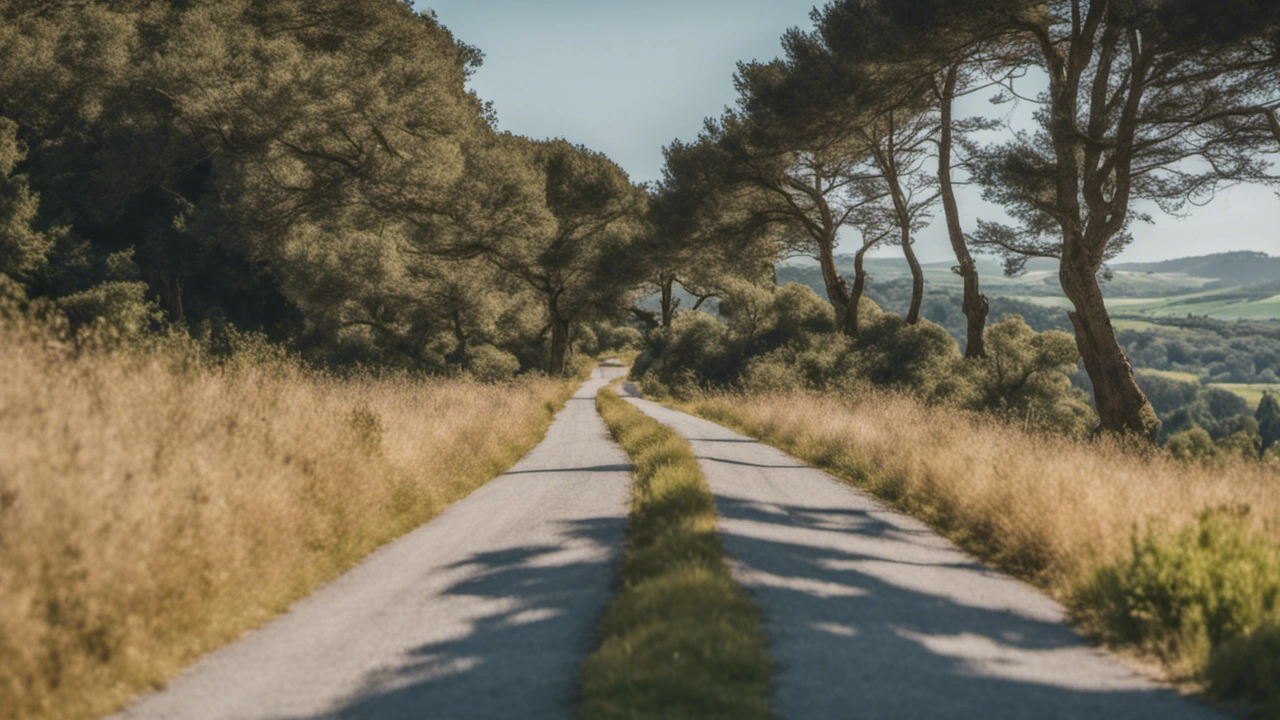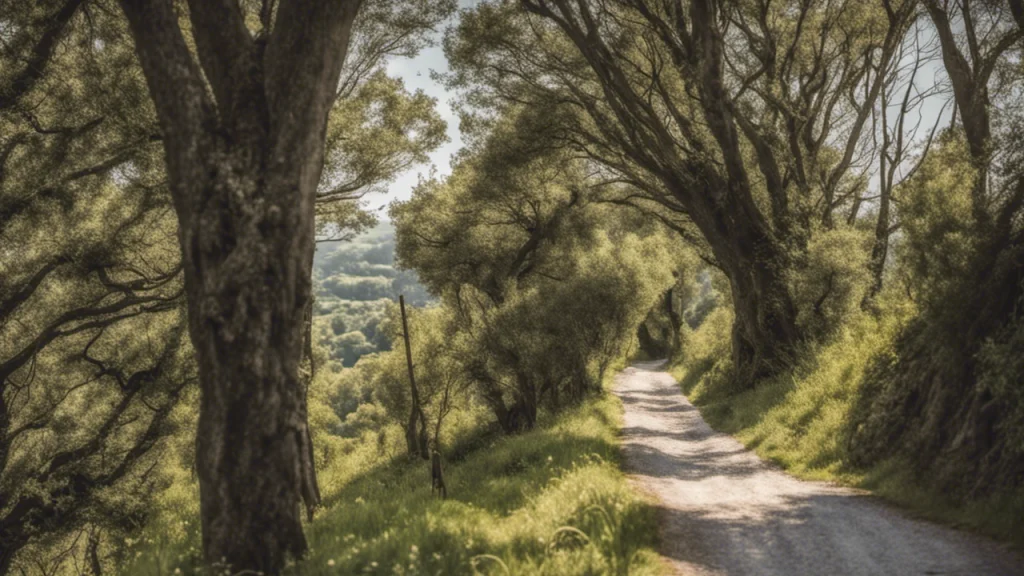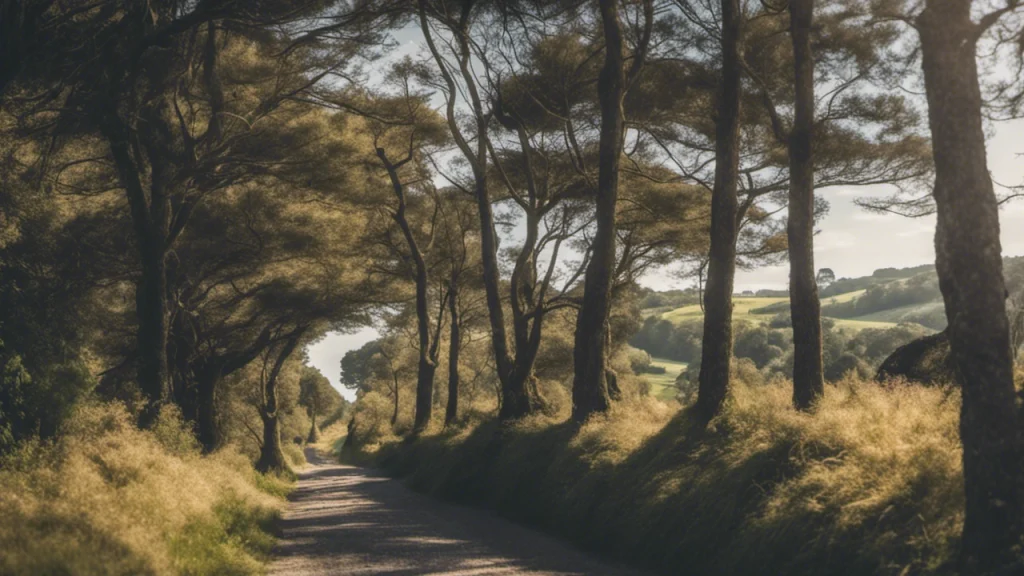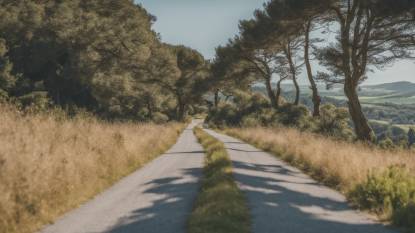
Camino Inglés: Ferrol to Neda - Stage 1
Posted: | Updated:
Reading time: 9 minutes
Camino Inglés: Ferrol to Neda - Stage 1
Posted: | Updated:
Reading time: 9 minutes
By: Simon Kemp, Editor
The first Camino Inglés stage from Ferrol to Neda is a 15km or 9.3 miles route that begins in Ferrol’s historical district, highlighting the city’s maritime past. Pilgrims then follow a coastal path with views of Ferrol’s active shipyard and naval base. The journey continues through urban areas in Xubia and Narón before transitioning to a serene countryside approach to Neda.
The terrain is mostly flat, starting with cobbled streets in Ferrol, transitioning to urban walkways, and ending with dirt tracks near Neda. Notable points of interest include Ferrol’s historical buildings, the Ría de Ferrol estuary, and the San Nicolás Church in Neda. Potential challenges include navigation in Ferrol’s streets and traffic in Narón. Rest stops are available in Xubia, Narón, and Neda.
Map of Ferrol to Neda
Departure point: Ferrol
Ferrol , with its rich maritime history and status as a significant starting point of the Camino Inglés, offers pilgrims a unique blend of historical, cultural, and natural attractions. A stay in the city allows one to delve deep into Galician culture before embarking on their spiritual journey to Santiago.
Introduction to Ferrol
- History & Significance: Ferrol, located in the province of A Coruña, Galicia, Spain, is historically known for its deep-water port and shipyards. It’s also one of the primary starting points of the Camino Inglés, a pilgrimage route that English and other Northern European pilgrims used when arriving by boat.
- Geography & Demographics: Nestled on the northern coast of Galicia, Ferrol stands as a significant naval and commercial port, offering both history and coastal beauty.
Ferrol: Historical Background
- Camino Context: In the Middle Ages, Northern European pilgrims would arrive in Ferrol by sea to begin their journey to Santiago. Thus, the town became an integral part of the Camino’s history.
- Naval Importance: The town expanded in the 18th century due to the strategic importance of its shipyards, which were fundamental for the Spanish Navy.
Ferrol: Main Attractions & Points of Interest
- Military Arsenal: A testament to Ferrol’s maritime significance, this historical naval base offers glimpses into Spain’s naval past.
- Magdalena Neighborhood: A picturesque area with grid-planned streets and Modernist architecture.
- Church of San Francisco: An emblematic church showcasing Baroque style, often visited by pilgrims and tourists alike.
Pilgrim’s Services in Ferrol
- Accommodations: Pilgrims can rest at several albergues and hostels tailored to their needs, including the Albergue de Peregrinos de Ferrol.
- Food Services: Experience Galician cuisine at places like “O Pote” which offer traditional dishes like “pulpo a la gallega” (Galician-style octopus).
- Health Facilities: Multiple pharmacies can be found throughout, and the main hospital, Hospital Arquitecto Marcide, caters to more pressing medical needs.
Ferrol Local Customs & Traditions
- Semana Santa (Holy Week): A significant event, Ferrol’s Holy Week is declared a Festival of International Tourist Interest, marked by processions and traditions.
Natural Beauty & Surroundings of Ferrol
- Beaches: Ferrol is near to several beautiful beaches, such as Doniños and San Xurxo, perfect for relaxation after a long journey.
- Parks: The Reina Sofía park, located in the heart of the city, offers peaceful strolls and green spaces.
Personal Experiences & Testimonials
- Quotes: One pilgrim noted, “Starting my journey in Ferrol felt like stepping back in time, with the city’s rich naval history blending seamlessly with the spiritual aura of the Camino.”
Ferrol Practical Information
- Transportation: The city is well-connected with regular train and bus services, making arrivals and departures convenient.
- Best Time to Visit: Spring and autumn are ideal for walking the Camino Inglés, with milder temperatures and fewer crowds.
Transportation Options from Ferrol to Neda
If you are planning to travel from Ferrol to Neda in Spain, instead of hiking or walking, you might be wondering what are the best transportation options for your trip. Here we will compare the different ways to get from Ferrol to Neda by train, bus or taxi, and help you decide which one suits your needs and budget.
Take the Train from Ferrol to Neda
One of the fastest and most comfortable ways to travel from Ferrol to Neda is by train. Renfe Viajeros operates a train from El Ferrol to Neda once daily. Tickets cost €3 – €5 and the journey takes 7 minutes. The train departs from El Ferrol station and arrives at Neda station, which are both located in the city centers. The train is equipped with air conditioning, power outlets, and free WiFi. You can book your tickets online or at the station.
Bus from Ferrol to Neda
Another option to travel from Ferrol to Neda is by bus. Transporte de Galicia operates a bus from O Inferniño to Neda every 30 minutes. Tickets cost €1 – €2 and the journey takes 32 minutes. MonBus also services this route twice daily. The bus departs from O Inferniño bus stop, which is about 2 km or 1.2 miles from the city center of Ferrol, and arrives at Neda bus stop, which is in the heart of the town. The bus has comfortable seats and luggage storage.
Taxi from Ferrol to Neda
If you prefer a more convenient and flexible way to travel from Ferrol to Neda, you can take a taxi. The taxi ride takes about 7 minutes and covers a distance of 8.5 km or 5.2 miles . The taxi fare is around €14 – €17, depending on the traffic and the time of the day. You can find a taxi rank at El Ferrol station or call one of the local taxi companies.

Breakdown of the Ferrol to Neda Camino Route
- Ferrol’s Historical District:
Starting from the bustling port city of Ferrol, pilgrims usually set out from the central square or Plaza de España. Wandering through Ferrol’s historical district gives one an insight into the city’s naval and maritime past. The narrow streets and preserved buildings here hark back to the times when Ferrol was a significant naval port. - Coastal Path – Views of the Shipyard and Naval Base:
After leaving the historical district, the path traces the Ría de Ferrol estuary. This coastal stretch is picturesque, but it also passes by Ferrol’s shipyard, which is still active and a testament to the city’s ongoing maritime heritage. The naval base, another major landmark, reminds pilgrims of the city’s strategic importance. - Through Xubia and Narón:
Exiting the coast, the path ventures through Xubia and Narón. Both places offer a mix of urban walkways and brief glimpses of green spaces. Xubia has a riverside stretch which is particularly scenic, while Narón’s streets might give you a feel of the local life away from the main tourist trails. - Countryside Approach to Neda:
The last section is a pleasant transition from urban to rural. The path becomes greener, and the surroundings quieter, offering a serene walk as you approach the town of Neda.
Changes in Terrain and Elevation:
Most of this stage remains flat, making it accessible to pilgrims of various fitness levels. The beginning in Ferrol is mostly cobbled or paved streets, transitioning to urban walkways in Xubia and Narón. The end of this stage will be characterized by dirt tracks and some soft trails as you get closer to Neda.
Points of Interest Along the Route:
- Ferrol’s Historical District: Buildings here, especially around the Plaza de España, are reminiscent of the 18th century.
- San Nicolás Church in Neda: On arrival at Neda, this Romanesque gem from the 12th century is worth a visit.
- Ría de Ferrol Estuary: A tidal estuary that provides calming water views, especially prominent during the initial coastal stretch.
- Ferrol’s Shipyard: A hub of activity, it’s intriguing to see ships in various stages of construction.
- Pedrido Bridge: Visible as you near Neda, this bridge is a fine example of engineering and aesthetics combined.
Potential Challenges or Difficulties:
- Navigating Ferrol: The city’s streets, especially in the historical district, can be confusing.
- Traffic in Narón: Some stretches in Narón could be close to vehicular roads. Pilgrims should remain cautious.
Opportunities for Rest Stops:
- Xubia: Midway through the journey, Xubia has spots where one can rest by the riverside.
- Narón: Being more urban, it offers a choice of cafes and eateries. It’s a good place for a more substantial break.
- Neda: Upon completion of this segment, Neda has hostels and dining options where pilgrims can recuperate and prepare for the next segment, stage 2 from Neda to Pontedeume .

Destination: Neda
Neda, though modest in size, is grand in its offerings. From its historical landmarks and gastronomic delights to its natural vistas, it promises every pilgrim a bouquet of experiences, making it an unforgettable waypoint on the Camino Inglés.
Introduction to Neda
- History & Significance: Neda, with roots tracing back to the Roman era, sits like a welcoming embrace after leaving Ferrol. Over centuries, it has provided shelter, sustenance, and solace to pilgrims eager to embark on their spiritual journey.
- Geography & Demographics: Nestled at the edge of the Ría de Ferrol, Neda boasts a population that’s just shy of 5,000. The town’s layout mirrors the estuary, giving it a unique, elongated appearance.
Historical Background
- Camino Context: Neda’s significance is amplified on the Camino. The town’s Roman roots are visible in structures and pathways, making pilgrims feel they’re walking through a living history book.
- Bread History: Bread-making in Neda is not just a culinary exercise but an art. Ancient ovens and traditional baking techniques have been passed down through generations, making Neda’s bread an emblem of its identity.
3. Main Attractions & Points of Interest
- Church of Santa María: Built in the 12th century, it’s a testament to Galician religious architecture, featuring intricate stonework and historical artifacts.
- Roman Bridge: More than just a passage over the Belelle river, this bridge serves as a portal to the town’s Roman past. Legends whisper of Roman soldiers and ancient merchants who once trod the same path.
- Belelle Waterfall: Beyond its sheer beauty, the waterfall is surrounded by trails and picnic spots, making it a haven for nature lovers and those seeking solace.
Pilgrim’s Services
- Accommodations: Apart from the Albergue de Peregrinos de Neda, there are several guesthouses that provide a cozy stay, often run by families with deep roots in the town.
- Food Services: The gastronomic scene in Neda is rich with eateries offering “empanadas”, fresh seafood, and, undoubtedly, the famed local bread.
Local Customs & Traditions
- Festa do Pan (Bread Festival): This isn’t just a festival; it’s a grand affair in Neda. Locals and tourists alike come together, baking bread in communal ovens, partaking in workshops, and celebrating the town’s rich bread legacy.
Natural Beauty & Surroundings
- Estuary Views: From various vantage points in town, one can witness the confluence of freshwater and sea, a spectacle that paints a different picture with every tide.
- River Walks: The Belelle river isn’t just a water body; it’s the lifeblood of Neda. The ancient mills along its banks are reminiscent of a time when water was the primary source of energy.
Personal Experiences & Testimonials
- Quotes: Another pilgrim once shared, “The first time I bit into a loaf of Neda’s bread, it felt like I was tasting the town’s soul—earthy, warm, and inviting.”
Neda Practical Information
- Transportation: While most pilgrims walk into Neda, those who prefer can use the efficient local bus services connecting it to Ferrol and other nearby towns.
- Best Time to Visit: The vibrancy of summer festivals can be enticing, but for those who seek tranquillity, the gentle spring and crisp autumn air are ideal.
